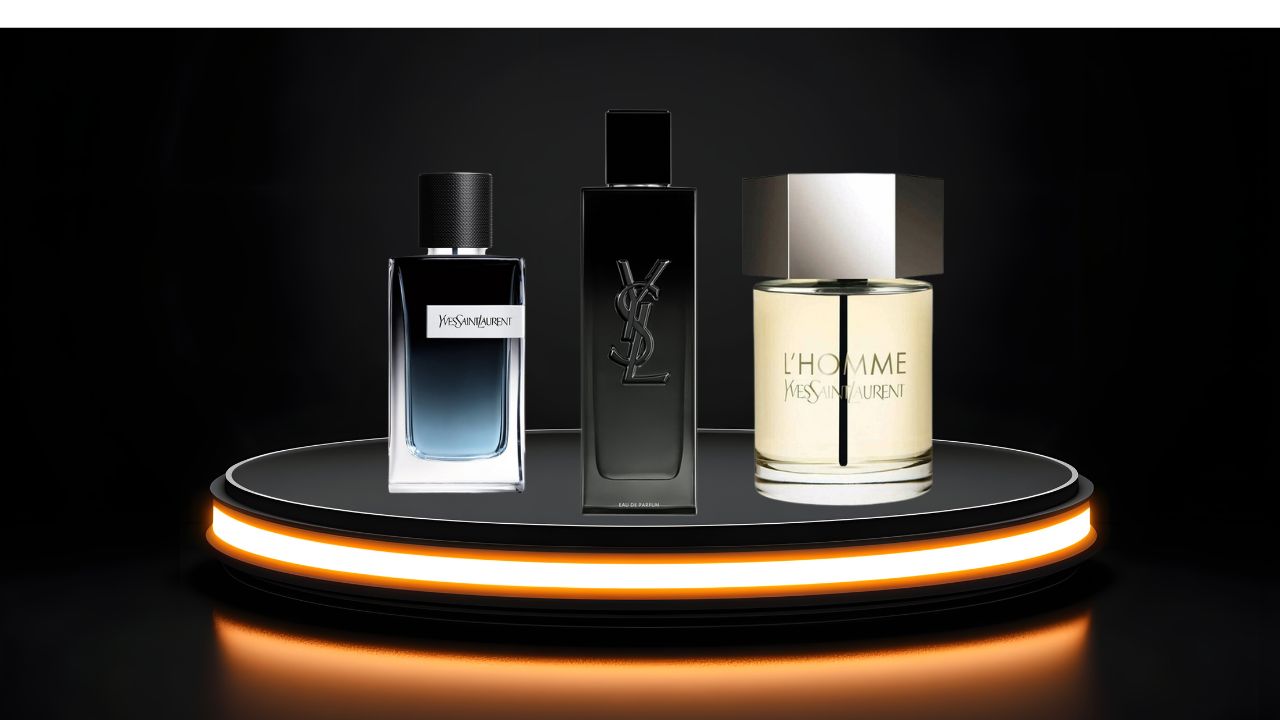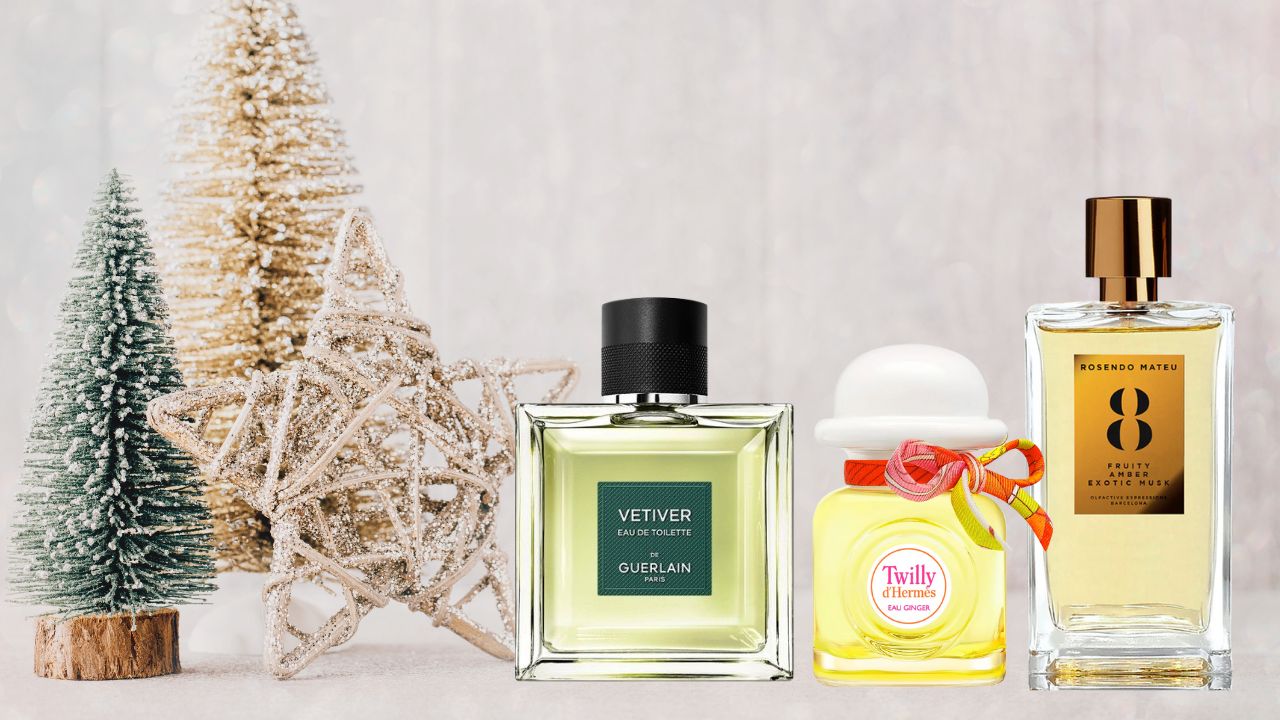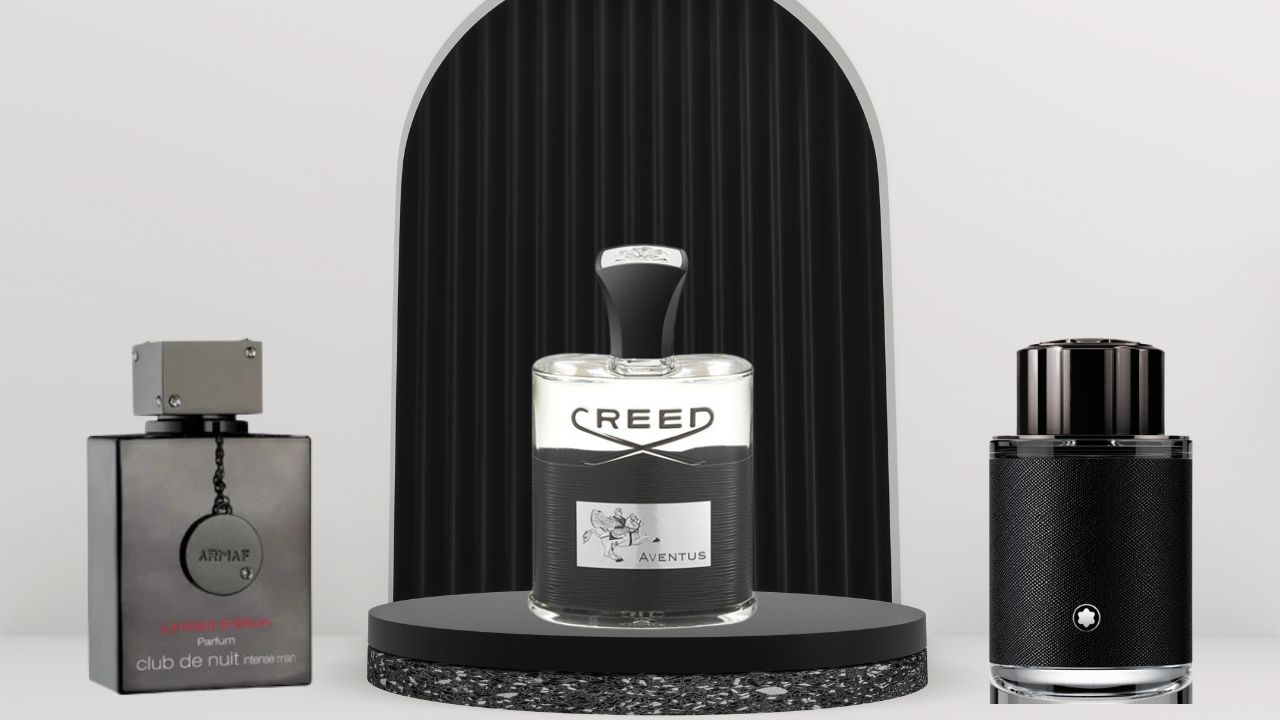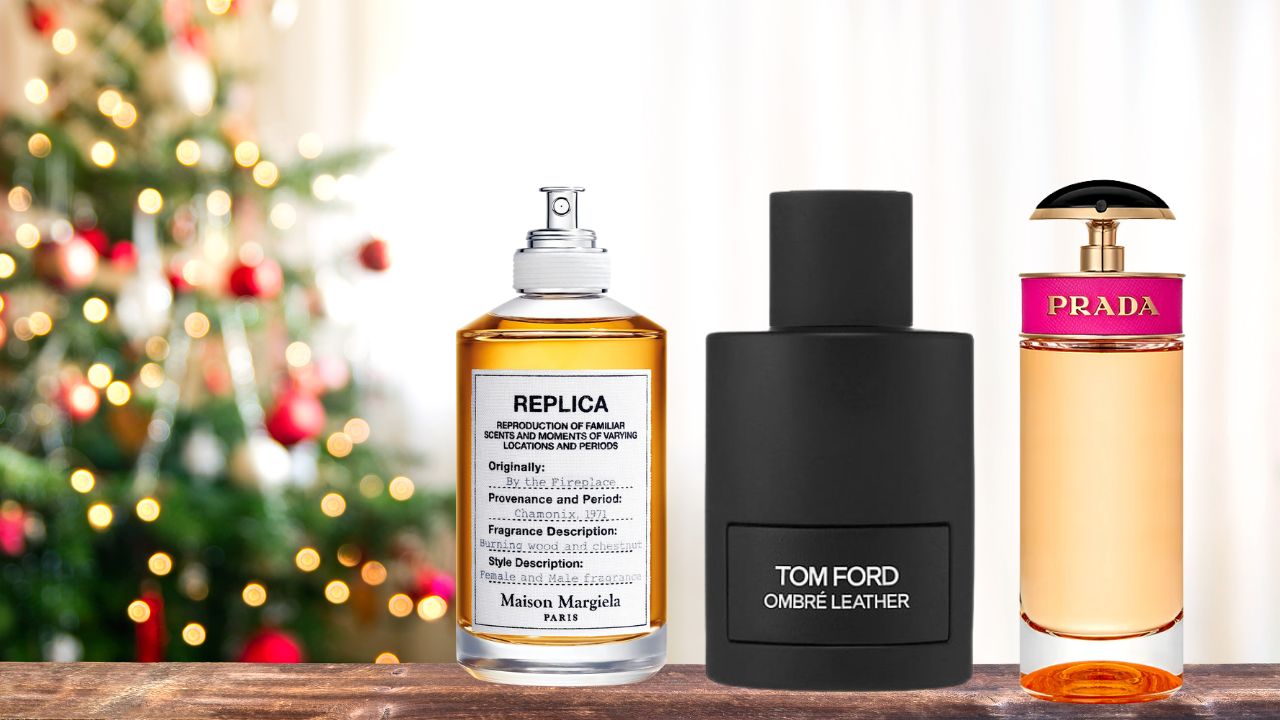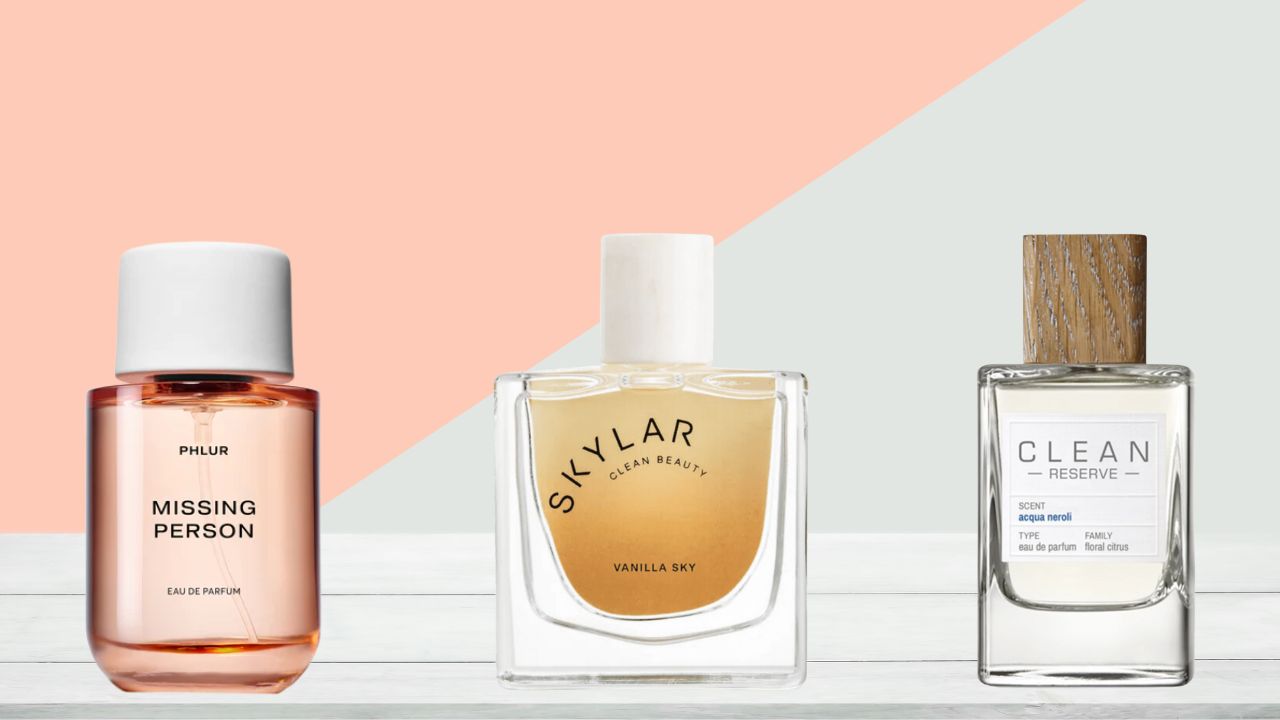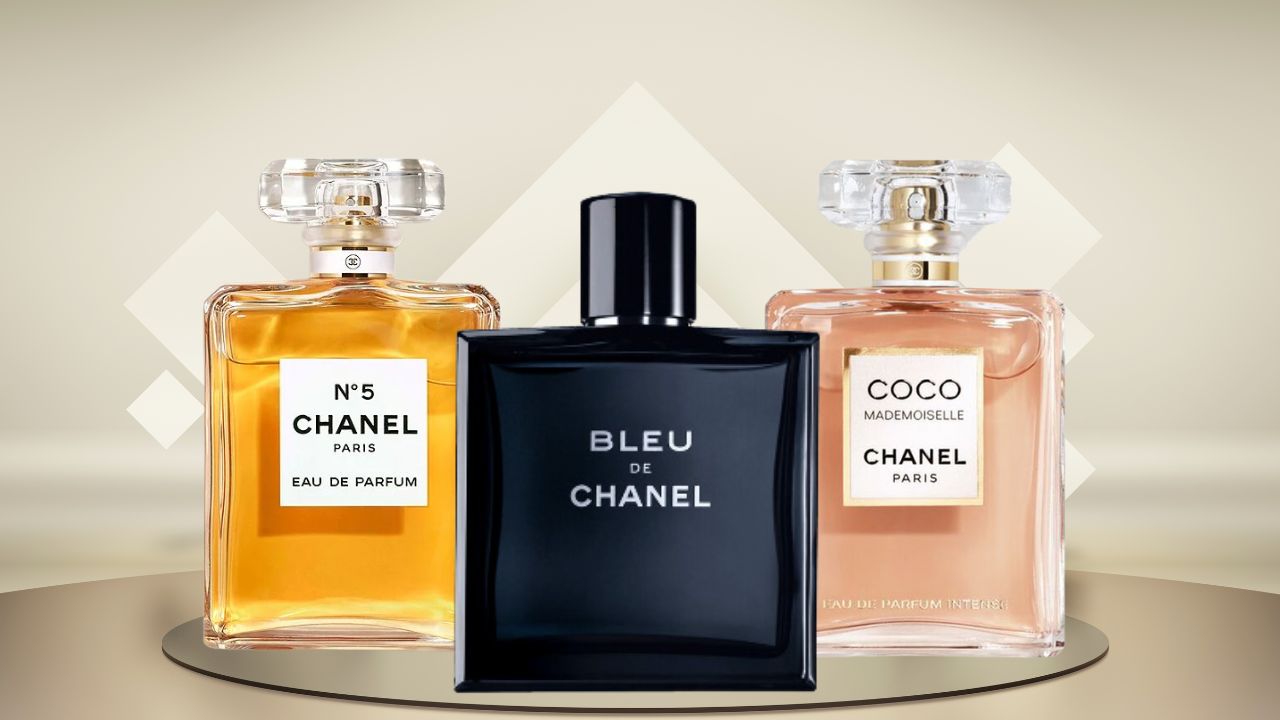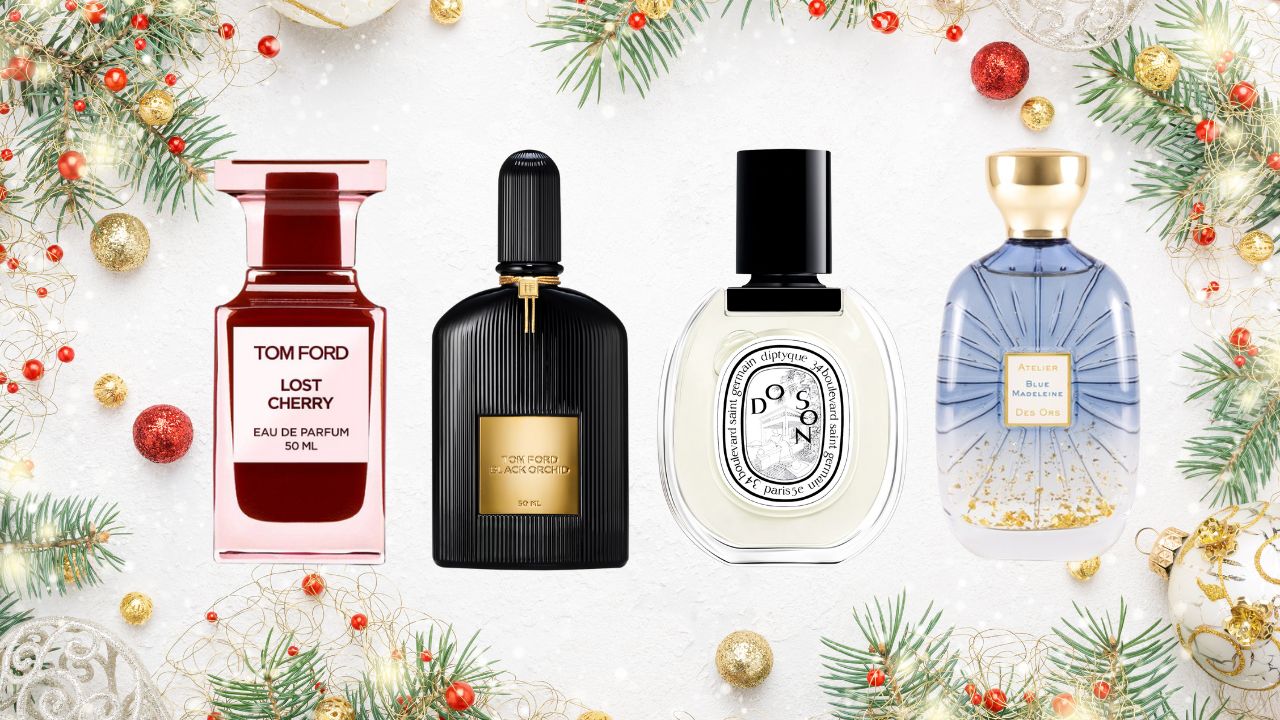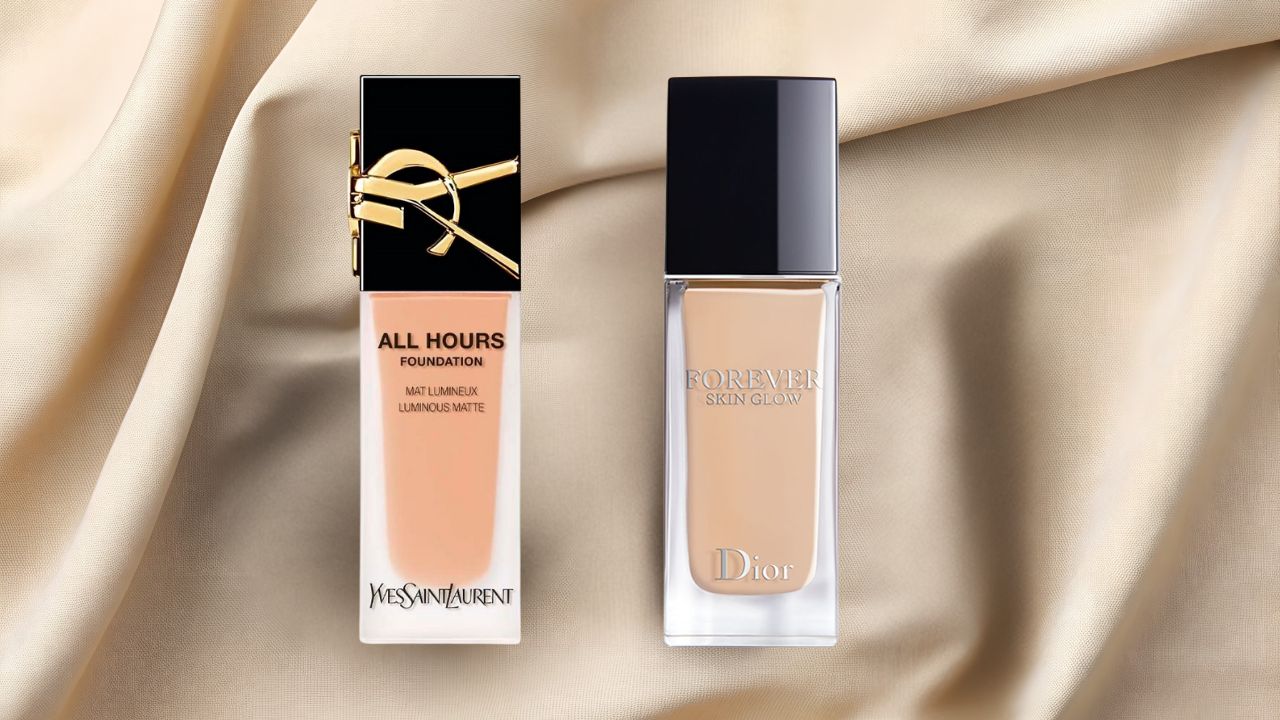Blog
Home / Beauty, Hair & Skin Care / Best Facial Sunscreen for Oily, Sensitive, Dry & Combination Skin (2025 Guide)
Categories
Recent Posts
- Best YSL Perfumes for Men in 2026: The Definitive Guide
- Affordable Christmas Perfume Gifts That Actually Feel Luxurious
- The Definitive Guide to Perfumes That Smell Like Creed Aventus: Luxury Scents Without the Luxury Price Tag
- Perfume Advent Calendars: 12 Days of Niche Scents
- Christmas Makeup Ideas: Your Guide to Festive Glamour That Actually Works
Best Facial Sunscreen for Oily, Sensitive, Dry & Combination Skin (2025 Guide)
0
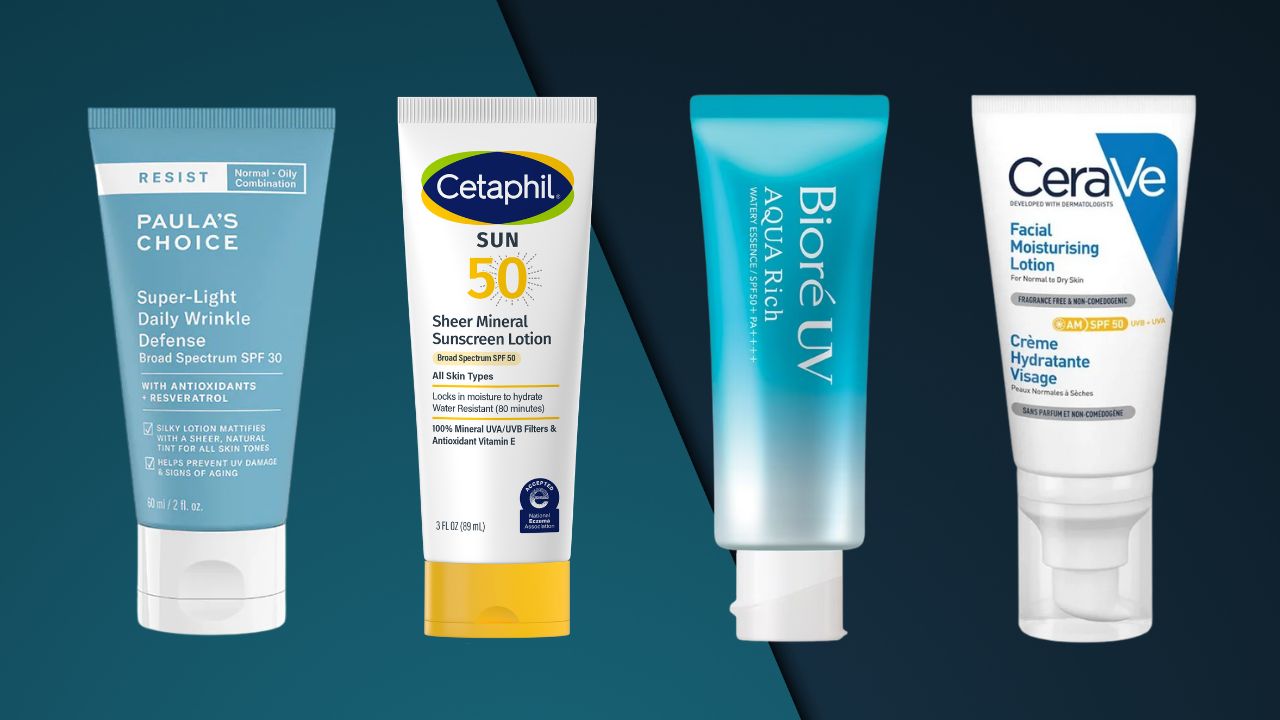
Finding the best facial sunscreen for your specific skin type is like searching for the perfect pair of jeans—one size definitely doesn’t fit all. Whether you have oily, sensitive, dry, or combination skin, the right sunscreen for face can make a world of difference in how your skin looks and feels throughout the day while protecting against harmful UV damage, premature aging, and skin cancer.
But let’s be real: sunscreen shopping can be overwhelming. Some formulas feel too greasy and cause breakouts, others leave a ghostly white cast that looks chalky in photos, and some just don’t play nice under makeup or cause your foundation to pill. The wrong face sunscreen can make you avoid wearing it altogether—which is exactly what your skin doesn’t need.
That’s why we’ve rounded up the best sunscreens for every skin type—from lightweight mattifying sunscreen formulas for oily skin to ultra-hydrating options for dry skin, gentle mineral sunscreen for sensitive complexions, and balanced formulas for combination skin. Each recommendation has been carefully selected based on performance, ingredient quality, user reviews, and dermatologist recommendations.
Ready to find your perfect match? Let’s dive in!
Understanding Sunscreen: Why It’s Non-Negotiable for Every Skin Type
Before we explore the best facial sunscreens for different skin types, it’s crucial to understand why daily sun protection matters regardless of your complexion, weather, or lifestyle. UV radiation doesn’t discriminate—it damages all skin types, accelerates aging, causes hyperpigmentation, and significantly increases skin cancer risk.
The sun emits two types of harmful UV rays that penetrate your skin: UVA rays (aging rays) that cause wrinkles, sagging, and age spots by penetrating deep into the dermis, and UVB rays (burning rays) that damage the skin’s surface and cause sunburns. Both contribute to skin cancer development and premature aging. A broad-spectrum sunscreen protects against both, making it your first line of defense against visible aging and serious health risks.
Many people mistakenly believe they only need sunscreen for face on sunny beach days, but up to 80% of UV rays penetrate clouds, meaning you’re exposed even on overcast days. UV rays also reflect off surfaces like water, sand, snow, and concrete, intensifying exposure. If you’re indoors near windows or driving, UVA rays penetrate glass and continue damaging your skin. This is why dermatologists unanimously agree that daily facial sunscreen is the single most important anti-aging product you can use—more effective than any serum, cream, or treatment.
Our Top Picks
- Best for Oily Skin: Paula’s Choice RESIST Wrinkle Defense SPF 30
- Best for Sensitive Skin: Cetaphil Sheer Mineral Sunscreen SPF 50
- Best for Dry Skin: CeraVe Facial Moisturizing Lotion SPF 50
- Best for Combination Skin: Biore Aqua Rich UV
Best Facial Sunscreen for Oily Skin
If your skin turns into an oil slick by midday, you need a sunscreen for oily skin that controls shine, absorbs excess sebum, mattifies your complexion, and leaves a lightweight finish that doesn’t clog pores or trigger breakouts. The challenge with oily skin is finding sun protection that doesn’t add to the grease or make you look shiny in photos. Here are the top picks that solve this frustrating problem:
1. Paula’s Choice RESIST Super-Light Wrinkle Defense SPF 30
Paula’s Choice RESIST Super-Light Wrinkle Defense SPF 30 has earned its reputation as one of the best sunscreens for oily skin through consistent performance and oil-controlling excellence. This tinted, mineral-based sunscreen uses zinc oxide as its active ingredient, providing broad-spectrum sun protection while physically blocking UV rays rather than absorbing them into your skin.
What sets this apart as the best mattifying sunscreen is its sophisticated formula that actively absorbs excess oil throughout the day. The lightweight texture transforms into a soft matte finish upon application, controlling shine without the need for setting powder. This makes it particularly valuable for those who struggle with midday grease and constant blotting. The formula contains a potent blend of antioxidants including vitamin C and green tea extract that help fight free radical damage and premature aging while you’re protected from the sun.
The sheer tint is a game-changer for those tired of the white cast that plagues most mineral sunscreens. It naturally evens out skin tone, blurs minor imperfections, and creates a smooth canvas that works beautifully as a makeup primer. Many users report being able to skip foundation entirely when wearing this sunscreen, as the tint provides enough coverage for everyday wear. The non-comedogenic sunscreen formula won’t clog pores or contribute to breakouts, making it suitable for acne-prone oily skin.
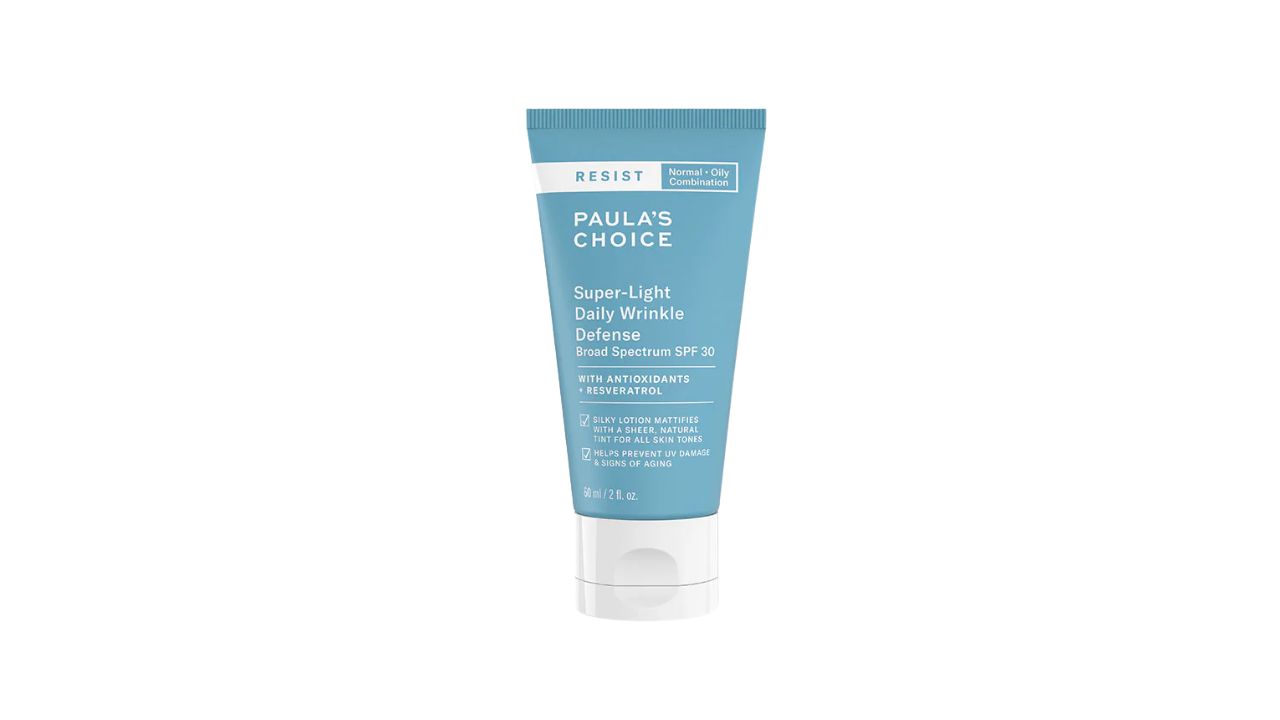
Pros
- Controls oil and shine for a matte finish
- Tinted formula evens out skin tone
- Works as a makeup primer
Cons
- Tint may not suit deeper skin tones
- SPF 30 may not be enough for extended sun exposure
2. SKIN1004 Madagascar Centella Air-Fit Suncream Light
SKIN1004 Madagascar Centella Air-Fit Suncream Light represents K-beauty innovation at its finest, delivering high SPF 50+ PA++++ protection in an incredibly lightweight formula that oily skin types rave about. This Korean sunscreen has gained cult status for its unique “air-fit” technology that creates a breathable, barely-there feel that makes you forget you’re even wearing sun protection.
The star ingredient, Centella Asiatica (also known as Cica or Tiger Grass), is a powerhouse botanical that calms irritation, reduces redness, speeds healing, and provides antioxidant protection. For oily skin that’s often accompanied by acne, inflammation, or sensitivity, this soothing ingredient makes the sunscreen therapeutic rather than just protective. Centella helps strengthen the skin barrier, which is particularly beneficial for oily skin that may be compromised from harsh acne treatments or over-cleansing.
What makes this one of the best face sunscreens for oily skin is how it manages to provide hydration without any greasiness. The formula contains hyaluronic acid and niacinamide that deliver moisture to skin cells while the lightweight base ensures nothing feels heavy or occlusive on the surface. This balance is crucial for oily skin, which still needs hydration but can’t tolerate heavy, emollient-rich products.
The texture is truly unique—it starts as a cream but transforms into an almost water-like consistency upon application, absorbing instantly into skin without any rubbing or waiting required. There’s no white cast, no sticky feeling, and no interference with makeup application. In fact, many users report that this lightweight sunscreen actually helps their makeup look better by creating a smooth, primed base. The finish is natural and skin-like rather than obviously matte, which looks more flattering in photos and doesn’t have that powdery appearance that some mattifying products create.
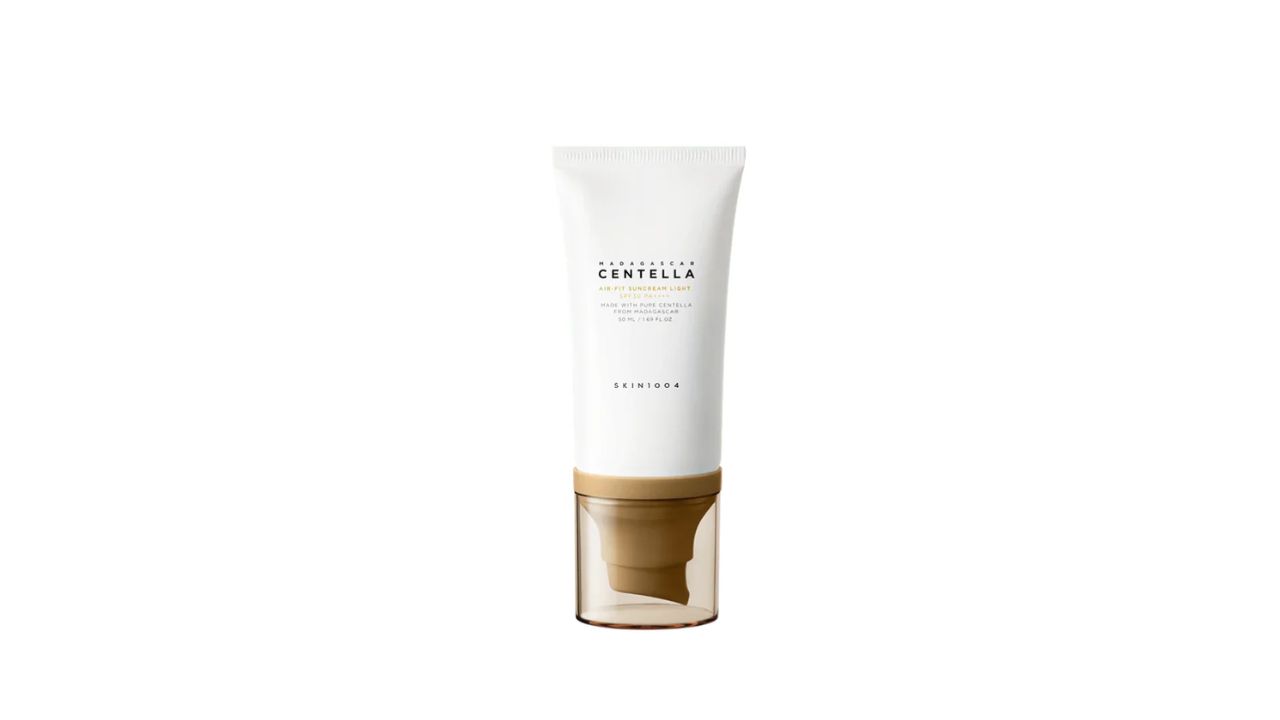
Pros
- Lightweight and non-greasy
- Soothes and hydrates with Centella Asiatica
- Absorbs quickly, perfect for layering under makeup
Cons
- May not be hydrating enough for dry skin
- Some may prefer a higher SPF rating
3. Biore UV Perfect Face Milk
Biore UV Perfect Face Milk has achieved iconic status in the sunscreen world, particularly among those with oily skin who demand a truly matte finish. This Japanese sunscreen for oily skin uses innovative sebum-absorbing powder technology that actively soaks up excess oil throughout the day, leaving behind a soft, velvety, almost powdery finish that helps makeup stay put for hours.
The ultra-lightweight milk texture is unlike typical Western sunscreens—it’s incredibly fluid and spreads effortlessly across skin, absorbing within seconds. Despite its mattifying effect, the formula isn’t drying thanks to the inclusion of hyaluronic acid and glycerin that provide just enough hydration to keep skin comfortable without adding shine. This careful balance makes it suitable even for those who occasionally experience dry patches alongside their oily areas.
What truly distinguishes this as one of the best mattifying sunscreens is its impressive water resistance up to 80 minutes. This makes it ideal for active lifestyles, outdoor workouts, or simply dealing with humid climates where regular sunscreens would slide right off oily skin. The formula creates a protective film that resists water and sweat while still allowing skin to breathe, preventing that suffocating feeling that some water-resistant formulas create.
The finish is so matte and smooth that many users skip primer entirely when using this sunscreen, as it creates the perfect canvas for makeup application. Foundation glides on effortlessly and stays put without the separation or sliding that often happens on oily skin. Even without makeup, the matte finish looks polished and shine-free, making it perfect for no-makeup days when you still want to look pulled together.
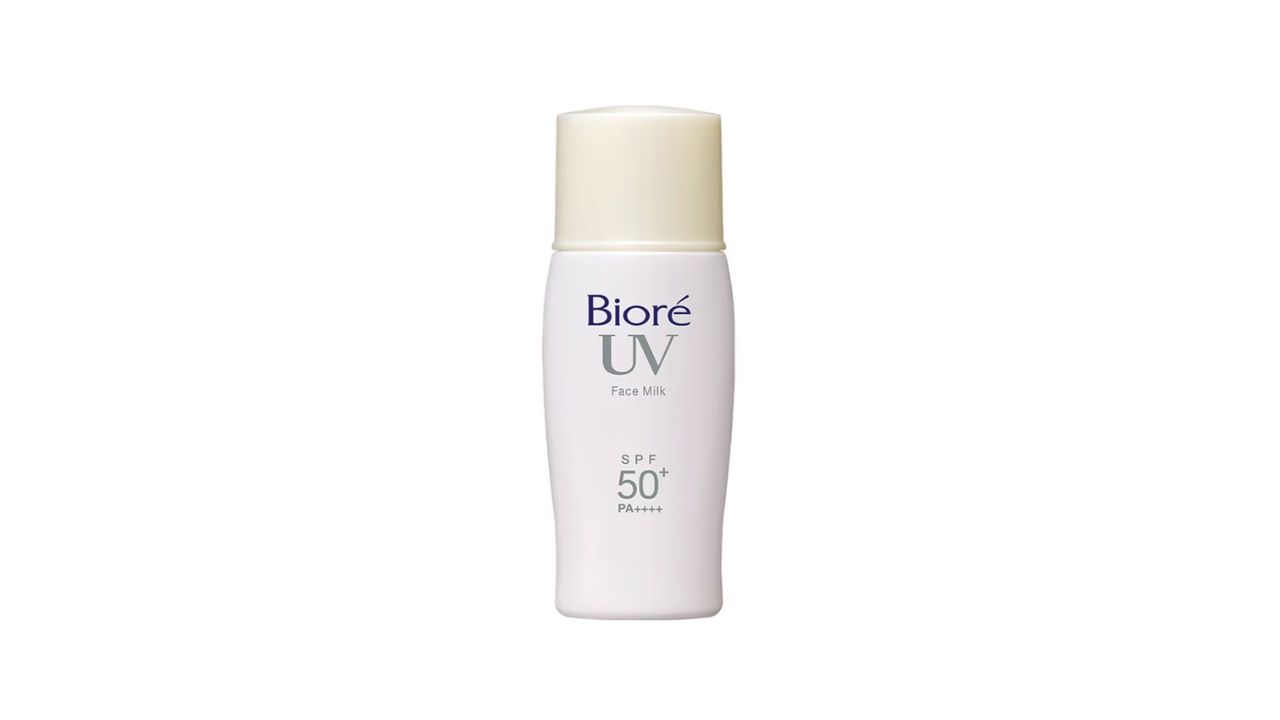
Pros
- Controls oil and shine for a matte finish
- Works as a primer under makeup
- Very water-resistant (up to 80 mins)
Cons
- May feel too drying for some skin types
Best Facial Sunscreen for Sensitive Skin
If your skin gets irritated easily, reacts to fragrances, or becomes red from typical sunscreens, you need a sunscreen for sensitive skin that’s gentle, hypoallergenic, fragrance-free, and formulated with non-irritating ingredients. Sensitive skin requires extra care when choosing sun protection because chemical filters can trigger reactions. These picks are dermatologist-approved for even the most reactive complexions:
4. Cetaphil Sheer Mineral Sunscreen Lotion SPF 50
Cetaphil Sheer Mineral Sunscreen Lotion SPF 50 stands as the gold standard for sensitive skin sunscreen, offering maximum protection with minimum irritation risk. This 100% mineral sunscreen uses only zinc oxide and titanium dioxide as active ingredients, forming a physical barrier that sits on top of skin and reflects UVA and UVB rays instead of absorbing them into your skin’s layers.
Why does this matter for sensitive skin? Chemical sunscreen filters work by absorbing UV rays and converting them into heat, which is then released from your skin. This process can trigger irritation, redness, and inflammation in reactive skin. Mineral filters, by contrast, simply bounce rays away without any chemical reaction occurring on your skin, making them significantly less likely to cause problems.
The formula is enriched with vitamin E, a powerful antioxidant that helps defend against free radicals while keeping skin nourished and protected. Vitamin E also has anti-inflammatory properties that soothe existing irritation and support skin barrier health. The inclusion of skin-soothing ingredients ensures that protection doesn’t come at the cost of comfort—your skin feels calm and comfortable throughout the day.
Thanks to Micronized Technology, this mineral face sunscreen avoids the heavy, chalky, paste-like texture that plagued earlier mineral formulations. The zinc oxide and titanium dioxide particles are finely milled, allowing them to blend more smoothly into skin and feel lighter during wear. While there may still be a slight white cast (common with most mineral sunscreens), it’s significantly less noticeable than traditional formulas and fades within minutes of application.
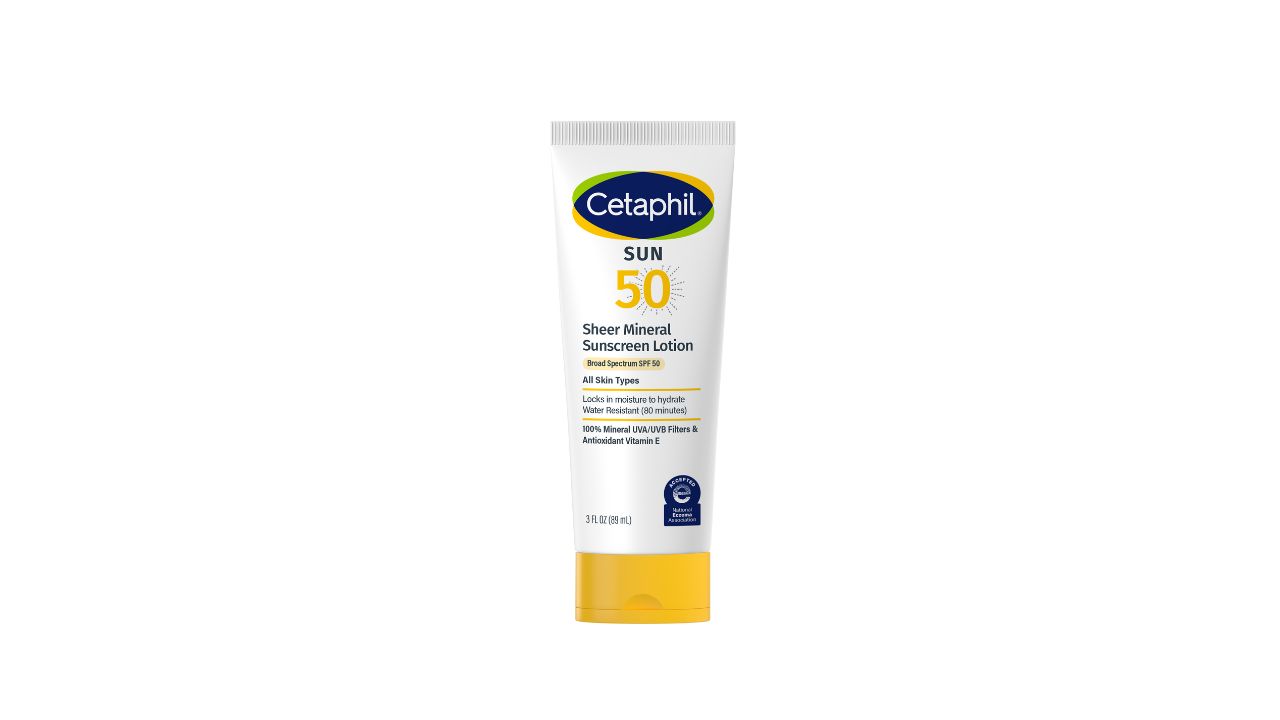
Pros
- 100% mineral formula, great for sensitive skin
- Hydrating and non-greasy texture
- Water-resistant for up to 80 minutes
Cons
- May leave a slight white cast, especially on deeper skin tones
- Takes time to fully absorb into the skin
5. ANESSA Perfect UV Mild Milk SPF 50+ PA++++
ANESSA Perfect UV Mild Milk SPF 50+ PA++++ represents the pinnacle of gentle yet high-performance sun protection, originally developed for the delicate skin of babies and children but loved by sensitive-skinned adults worldwide. This ultra-gentle, water-based sunscreen for face is completely free from alcohol, parabens, mineral oil, and fragrance—all common irritants that trigger reactions in sensitive skin.
What makes this one of the best sunscreens for sensitive skin is the innovative Aqua Booster EX Technology. This unique feature actually strengthens the sunscreen’s protective barrier when it comes into contact with sweat or water, rather than breaking down like typical formulas. This means your protection gets better, not worse, when you perspire or swim, making it incredibly reliable even during active days. The formula remains water-resistant even after 40 minutes in a pool, ensuring continuous protection.
Beyond UV defense, this formula contains an impressive 50% skincare ingredients, transforming it from simple sun protection into a treatment product. Hyaluronic acid provides deep hydration that plumps skin and reduces the appearance of fine lines. Glycerin locks in moisture and supports the skin barrier. Glycyrrhizate acid, derived from licorice root, has potent anti-inflammatory properties that soothe irritation, reduce redness, and calm reactive skin. This makes it particularly valuable for sensitive skin that’s prone to inflammation.
The lightweight milk texture absorbs effortlessly without any rubbing or waiting required, leaving a natural, radiant finish that looks like healthy, glowing skin rather than obviously protected skin. It works beautifully as a makeup primer, creating a smooth base that doesn’t pill or interfere with foundation application. The formula is also sand-resistant, meaning sand won’t stick to your skin when you’re at the beach—a small but appreciated detail for outdoor enthusiasts.
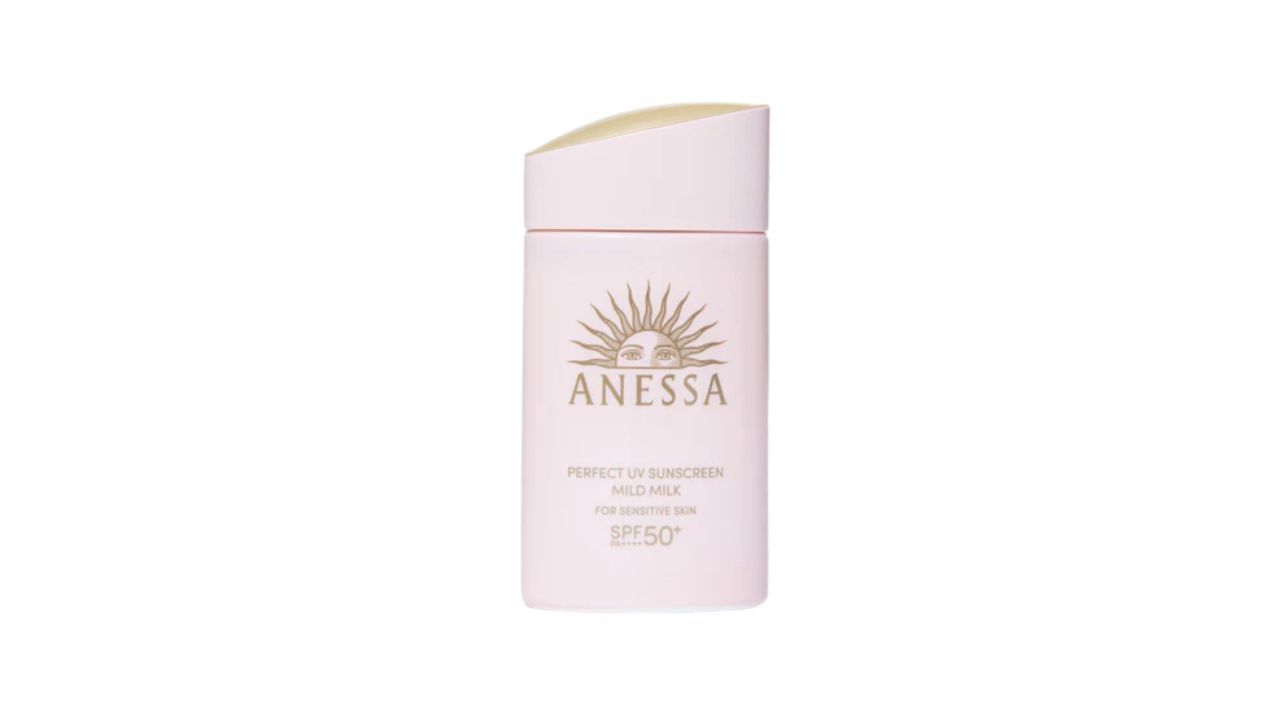
Pros
- Ultra-gentle, safe for sensitive skin and kids
- Water-resistant and sweatproof formula
- Hydrating with skincare ingredients
Cons
- Can feel slightly oily on very oily skin types
6. La Roche-Posay Anthelios Mineral Zinc Oxide SPF 50
La Roche-Posay Anthelios Mineral Zinc Oxide SPF 50 brings French pharmacy expertise to sensitive skin sun protection, combining gentle mineral filters with advanced antioxidant technology. This mineral sunscreen for sensitive skin features both zinc oxide and titanium dioxide for comprehensive broad-spectrum UVA/UVB protection without relying on potentially irritating chemical filters.
What distinguishes this from basic mineral sunscreens is the brand’s proprietary Cell-Ox Shield® technology—a sophisticated blend of antioxidants including vitamin E and senna alata extract that work synergistically to defend against free radical damage caused by UV exposure, pollution, and environmental stressors. This additional layer of protection helps prevent not just sunburn but also the oxidative stress that contributes to premature aging, hyperpigmentation, and loss of skin firmness.
The fast-absorbing, non-whitening formula represents significant advancement in mineral sunscreen technology. Through careful formulation and particle size optimization, La Roche-Posay has created a mineral face sunscreen that blends easily into skin without the heavy white cast that makes many people avoid mineral options. The formula leaves a soft matte finish that’s particularly flattering for oily or combination skin types, absorbing excess shine while still providing the gentleness that sensitive skin requires.
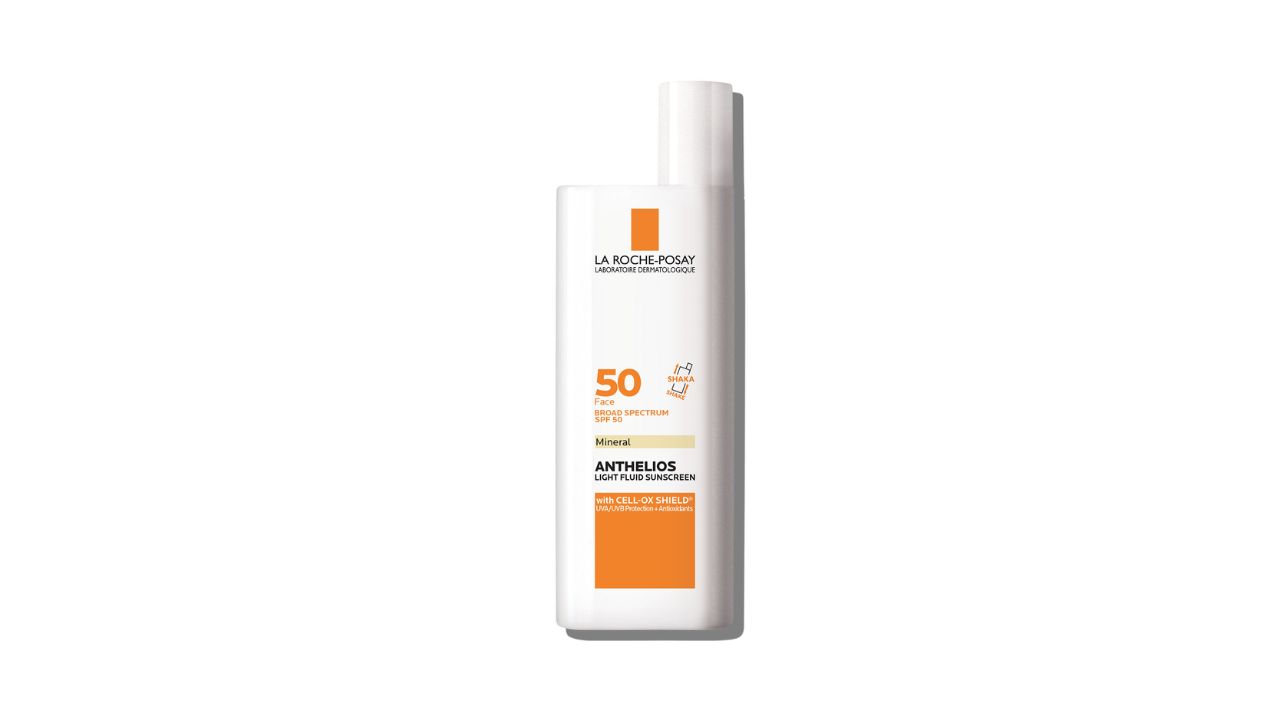
Pros
- Lightweight, fast-absorbing formula with a matte finish
- 100% mineral sunscreen, safe for sensitive skin
- Packed with antioxidants for extra skin protection
Cons
- Can leave a slight white cast on deeper skin tones
Best Facial Sunscreen for Dry Skin
If your skin feels tight, flaky, or uncomfortable, you need a sunscreen for dry skin that nourishes while protecting, providing hydration that lasts throughout the day without any greasy residue. Dry skin requires sun protection that doubles as skincare, delivering moisture-binding ingredients alongside UV filters. These hydrating formulas solve the common problem of sunscreens that make dry skin feel even more parched:
7. CeraVe Facial Moisturizing Lotion SPF 50
CeraVe Facial Moisturizing Lotion SPF 50 is the ultimate solution for dry skin, combining broad-spectrum sun protection with intensive hydrating and skin barrier-repairing ingredients in one efficient step. This hydrating sunscreen has revolutionized sun protection for dry skin by functioning as both moisturizer and SPF, eliminating the need for layering multiple products.
The formula is built around ceramides—specifically ceramides 1, 3, and 6-II—which are lipid molecules naturally found in healthy skin barriers. Dry skin often has a compromised barrier that can’t retain moisture effectively, leading to that tight, uncomfortable feeling. By replenishing these essential ceramides, this ceramide sunscreen actively repairs the skin barrier while protecting it from further sun damage. This makes it particularly valuable for those whose dryness is caused or worsened by barrier dysfunction.
Despite its intensely nourishing formula, the texture is surprisingly lightweight and absorbs relatively quickly. It never feels greasy or heavy, which is remarkable for such a hydrating product. The non-comedogenic sunscreen formula won’t clog pores despite its richness, making it suitable for dry skin that’s also prone to occasional breakouts. The fragrance-free formulation eliminates a common irritant that can worsen dryness and sensitivity.
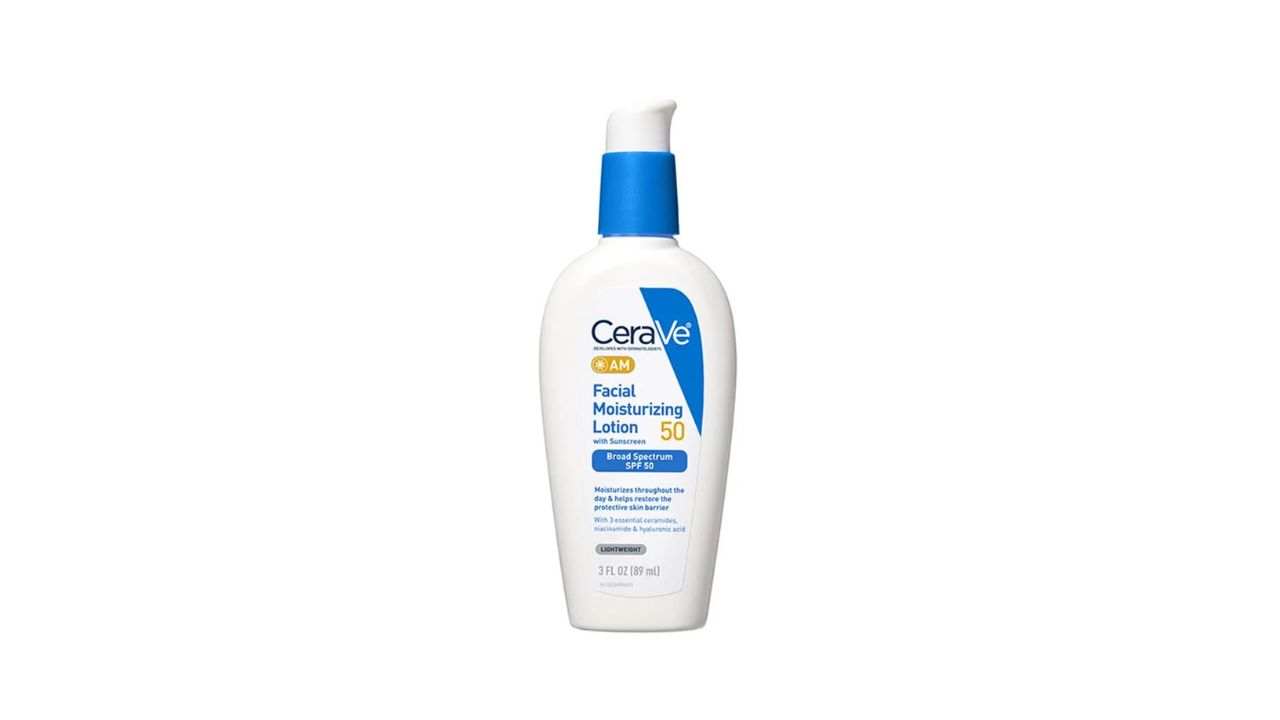
Pros
- Deeply hydrating with ceramides and hyaluronic acid
- Lightweight, fast-absorbing, and non-greasy
- Fragrance-free and non-comedogenic (won’t clog pores)
Cons
- Can take a few minutes to fully absorb
8. EltaMD UV Daily Broad Spectrum SPF 40
EltaMD UV Daily Broad Spectrum SPF 40 offers a sophisticated approach to sun protection for dry and mature skin, combining tinted mineral filters with anti-aging hydration. This tinted sunscreen for face is a favorite among dermatologists who recommend it specifically for patients dealing with dryness, fine lines, and signs of aging that benefit from both protection and moisture.
The formula is infused with hyaluronic acid at a concentration high enough to make a noticeable difference in skin hydration and plumpness. This helps reduce the appearance of fine lines and wrinkles by filling them from within through moisture attraction. For dry skin that often looks crepey or shows lines more prominently, this hydrating effect can be transformative. Many users report that their makeup looks better and lasts longer when applied over this moisturizing base.
The zinc oxide-based formula provides gentle yet effective broad-spectrum protection without the potential irritation of chemical filters—important for dry skin which often has increased sensitivity due to barrier compromise. The sheer tint comes in multiple shades to suit different skin tones, naturally evening out discoloration and creating a soft-focus effect that blurs imperfections. This makes it an excellent multitasker that can replace both sunscreen and light foundation for everyday wear.
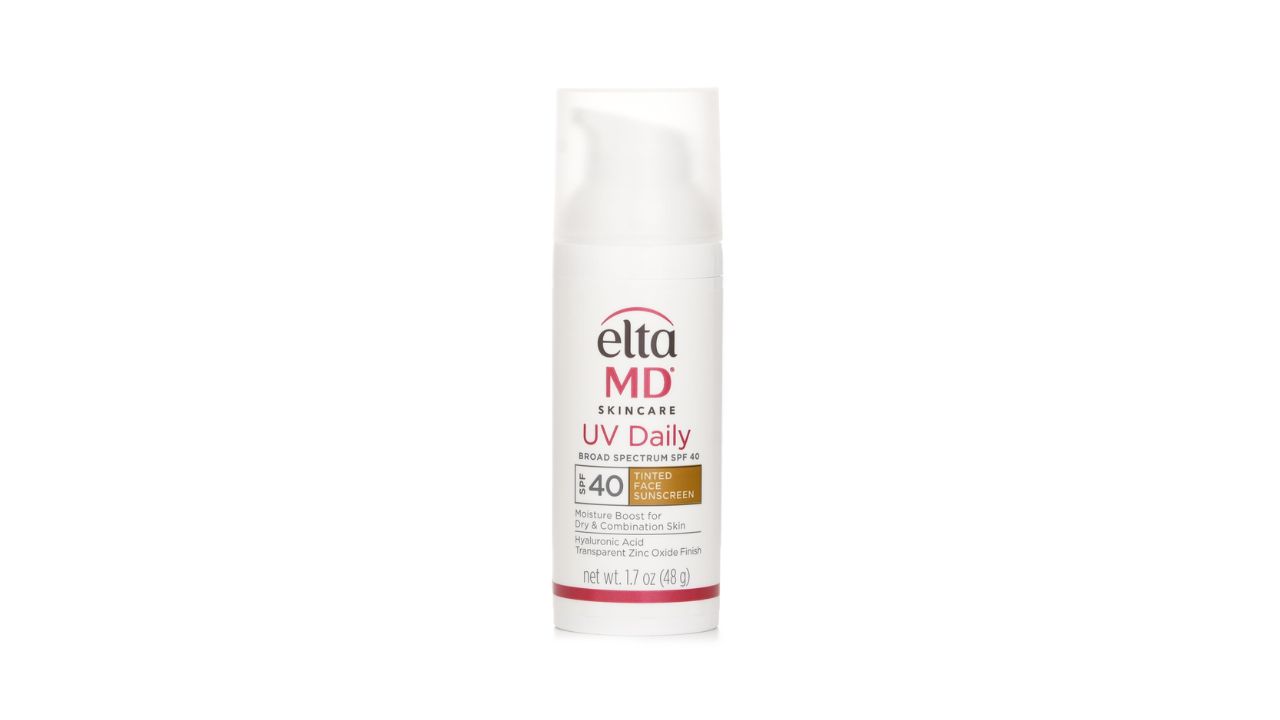
Pros
- Hydrates and plumps skin with hyaluronic acid
- Lightweight, sheer, and layers well under makeup
- Non-comedogenic and won’t clog pores
Cons
- Requires reapplication for extended sun exposure
9. La Roche-Posay Anthelios UVMUNE 400 Moisturizing Sun Cream
La Roche-Posay Anthelios UVMUNE 400 Moisturizing Sun Cream represents cutting-edge sun protection technology specifically designed for dry skin’s unique needs. This deeply hydrating face sunscreen offers advanced broad-spectrum protection while delivering the intensive moisture that dry skin craves, making it comfortable to wear all day without any tightness or discomfort.
The revolutionary feature is Mexoryl 400—a next-generation UV filter that provides protection against ultra-long UVA rays that other sunscreens miss. These rays penetrate deepest into skin and are primarily responsible for collagen breakdown, elastin degradation, and the deep wrinkles and sagging that characterize photoaging. For those concerned about preventing premature aging, this advanced protection is invaluable and sets this sunscreen apart from standard offerings.
The rich, creamy texture is specifically formulated for dry skin, providing substantial hydration without feeling heavy or greasy. It contains La Roche-Posay’s signature thermal spring water, which has soothing and antioxidant properties that calm any irritation or inflammation. The formula also includes glycerin and shea butter that create a protective layer on skin’s surface, preventing moisture loss throughout the day while the UV filters do their protective work.
The sunscreen is water, sweat, and sand-resistant, making it practical for beach days, outdoor activities, and humid conditions where dry skin often suffers more. Despite its resistance properties, it maintains its comfortable, moisturizing feel without that suffocating sensation some water-resistant formulas create. The formula is also fragrance-free, eliminating a common irritant for dry, sensitive skin.
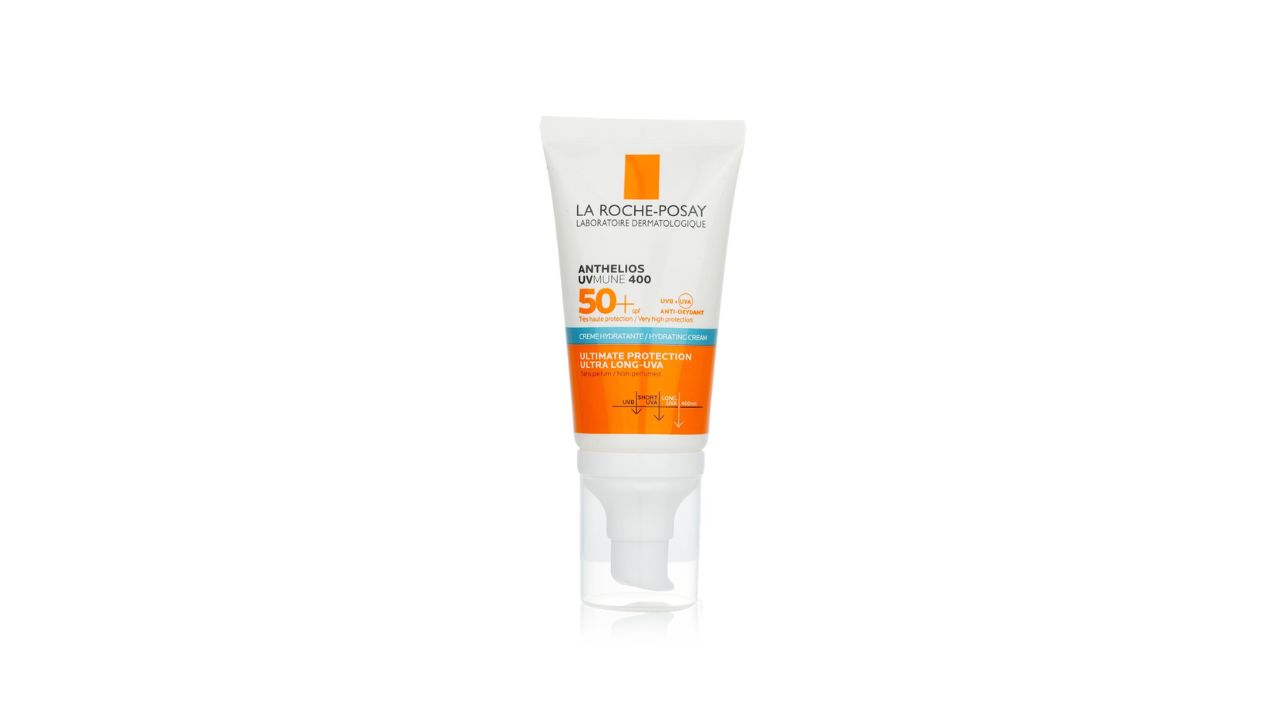
Pros
- Deeply hydrating and comfortable for dry skin
- Advanced Mexoryl 400 filter for ultra-long UVA protection
- Water, sweat, and sand-resistant
Cons:
- Slight white cast on deeper skin tones
Best Facial Sunscreen for Combination Skin
If your skin is oily in some areas (usually T-zone) and dry in others (typically cheeks), you need a balanced sunscreen for combination skin that hydrates without adding grease, controls oil without causing dryness, and creates an even finish across your entire face. Combination skin presents unique challenges because products that work for one zone often make other areas worse. These formulas masterfully balance both needs:
10. Biore Aqua Rich UV
Biore Aqua Rich UV has achieved cult status as the best sunscreen for combination skin, delivering SPF 50+ PA++++ protection in a feather-light, water-based formula that instantly absorbs into skin without any greasiness or heaviness. This Japanese lightweight sunscreen uses Aqua Rich technology that creates a moisture-rich protective veil without the heavy, occlusive feel that makes combination skin look unbalanced.
The genius of this formula lies in its ability to provide hydration through hyaluronic acid and glycerin while maintaining a finish that’s neither too matte (which would emphasize dry patches) nor too dewy (which would make oily areas look greasy). The result is a natural, skin-like finish that makes your entire face look evenly balanced and healthy rather than having some areas shiny and others flat.
The water-based formula absorbs instantaneously—within seconds of application, it’s completely melted into skin with no white cast, no sticky residue, and no waiting required before moving on to makeup. This quick absorption is crucial for combination skin because it means the product isn’t sitting on the surface of oily areas causing congestion while dry areas drink it up. Instead, it delivers benefits where needed and disappears without trace.
What makes this one of the best face sunscreens for combination skin is how it works under makeup. The balanced finish creates the perfect canvas—oily zones don’t cause makeup to slide off, and dry zones don’t show patches or catch product. Foundation glides on smoothly and stays put throughout the day without the separation that combination skin often experiences. Many users report their makeup looks better when using this as a base than with traditional primers.
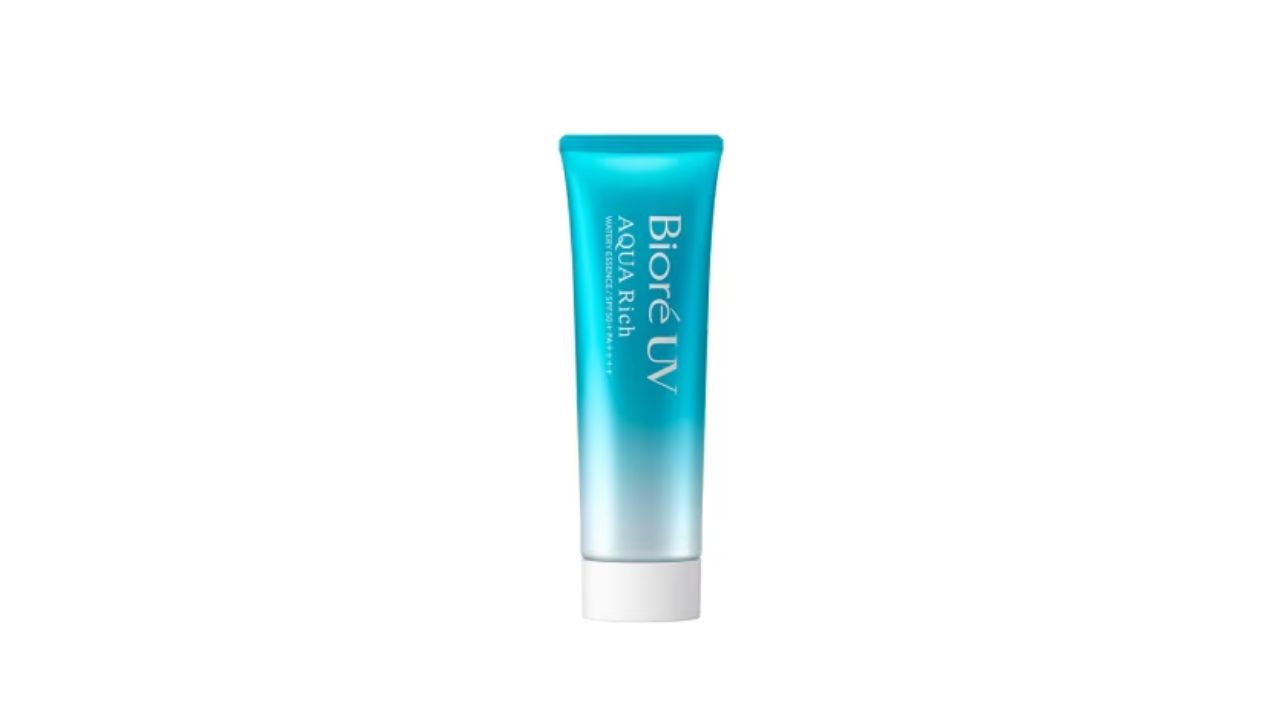
Pros
- Hydrating yet lightweight
- No white cast & works well under makeup
- Non-greasy and absorbs instantly
Cons
- SPF 30 may not be enough for prolonged sun exposure
11. Lancôme UV Expert Youth Shield Aqua Gel SPF 50 PA++++
Lancôme UV Expert Youth Shield Aqua Gel SPF 50 PA++++ elevates combination skin sunscreen to luxury status, offering multi-functional protection against UV rays, pollution, and oxidative stress in a sophisticated, lightweight formula. This premium face sunscreen uses Airy Defense™ Technology that creates an incredibly light, breathable texture that feels like wearing nothing despite providing comprehensive protection.
The formula is specifically designed for urban environments where combination skin faces multiple stressors. Beyond UV filters, it contains a pollution defense complex that creates a barrier against particulate matter, smog, and environmental pollutants that can clog pores (worsening oily areas) and cause oxidative damage (aging dry areas faster). For city dwellers, this multi-pronged protection is invaluable for keeping combination skin balanced and healthy.
The aqua gel texture is truly unique—it starts as a gel but transforms into a watery essence upon contact with skin, spreading effortlessly and absorbing within seconds. This texture innovation makes it perfect for combination skin because it provides enough substance to hydrate dry cheeks while being light enough not to overwhelm an oily T-zone. The finish is natural and imperceptible, creating an even canvas that doesn’t emphasize texture differences between zones.
What makes this one of the best sunscreens for combination skin is how it enhances your overall skincare routine. It layers beautifully over serums and treatments without pilling, and makeup applies flawlessly on top without any of the balling up or separation that combination skin often experiences. The formula contains vitamin E and adenosine for anti-aging benefits alongside protection, making it a treatment product rather than just sun defense.
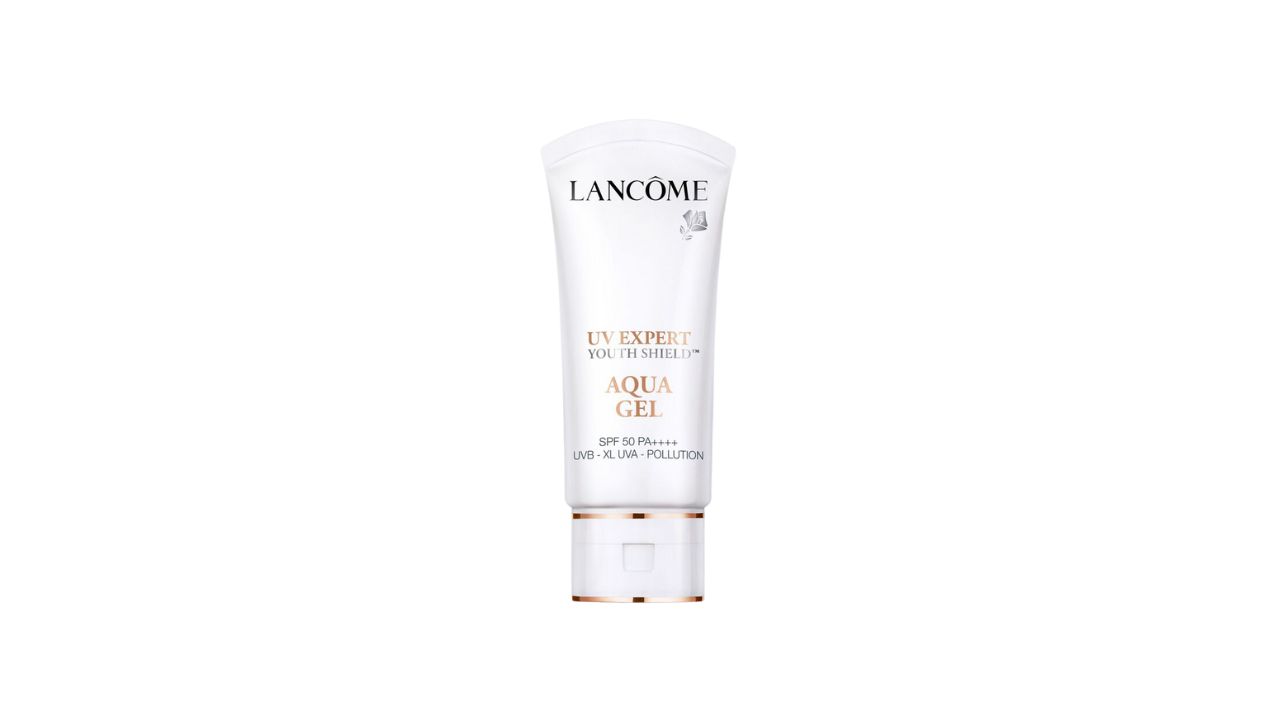
Pros
- High SPF protection against UVA & UVB rays
- Lightweight, breathable texture
- Pollution defense for urban environments
Cons
- Higher price point compared to drugstore sunscreens
12. Shiseido The Perfect Protector SPF 50+ PA++++
Shiseido The Perfect Protector SPF 50+ PA++++ represents cutting-edge Japanese sunscreen technology that adapts intelligently to environmental challenges, making it the ultimate choice for combination skin that faces active, unpredictable days. This high-performance sunscreen for combination skin uses revolutionary SynchroShield™ technology that actually becomes more effective when exposed to heat, water, or sweat—the exact conditions that cause most sunscreens to break down and fail.
The science behind SynchroShield™ is fascinating: when the sunscreen comes into contact with moisture or heat, the protective UV filter network reorganizes and strengthens itself rather than degrading. This means your protection improves during a workout, beach day, or simply walking around on a hot, humid day when you’re perspiring. For combination skin that tends to get oily in the T-zone when active, this technology ensures consistent coverage across your entire face even as some areas produce more moisture than others.
Beyond UV protection, the formula features NatureSurge Complex—a sophisticated blend of botanicals including rose apple leaf extract, gambir extract, and glycerin that work together to defend against environmental aggressors. This pollution defense system is crucial for combination skin exposed to urban environments, as pollutants can clog pores in oily zones while causing oxidative stress and premature aging in drier areas. The complex creates an invisible shield that protects skin from particulate matter, smog, and free radicals throughout the day.
What truly distinguishes this as one of the best sunscreens for combination skin is the invisible finish. Unlike many high-protection sunscreens that leave visible residue or alter your skin’s appearance, this melts seamlessly into skin without any white cast, tackiness, or shine. The formula creates an even, smooth canvas that makes your entire complexion look balanced and unified regardless of whether areas are naturally oily or dry. It works beautifully under makeup, never causing pilling, separation, or that dreaded greasy slide that combination skin often experiences with heavy sun protection.
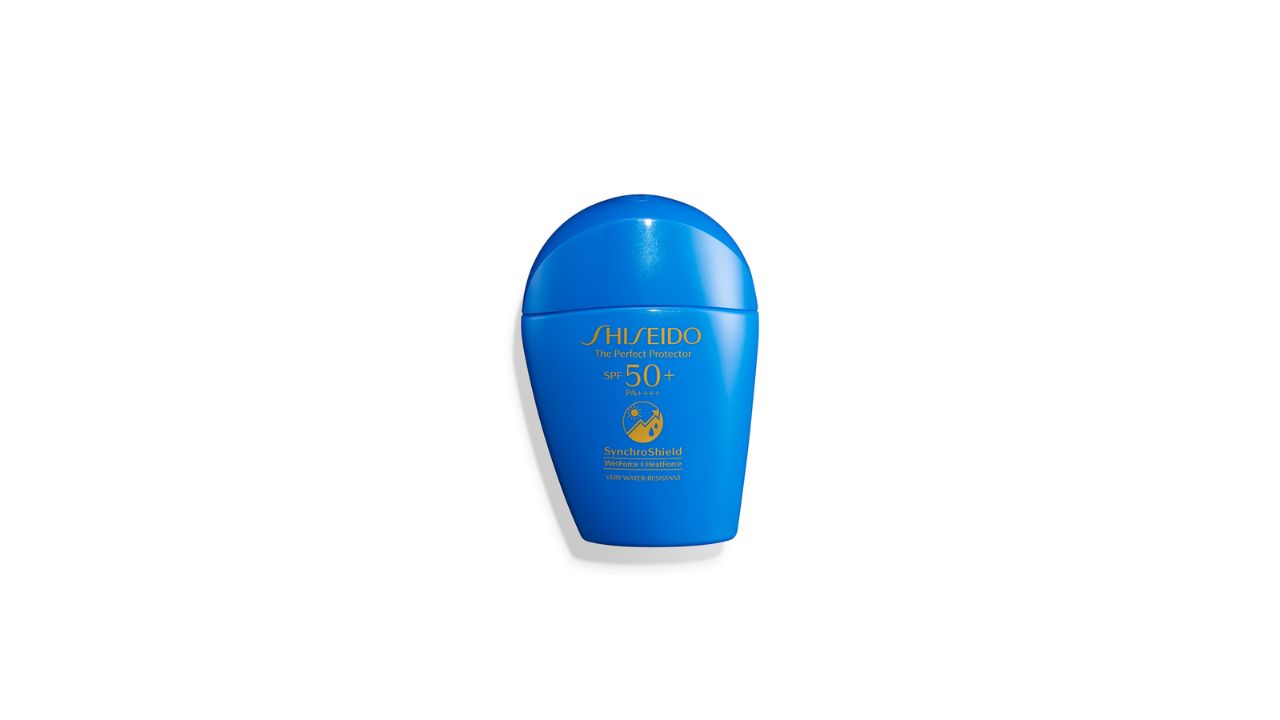
Pros
- Lightweight, fast-absorbing, and invisible finish
- Water-resistant for up to 80 minutes
Cons
- Premium price point
Complete Buying Guide: How to Choose the Best Facial Sunscreen for Your Skin Type
Now that you’ve seen our top recommendations for different skin types, understanding how to choose the right sunscreen for face ensures you select products that protect effectively while addressing your specific skin concerns. The wrong sunscreen can cause breakouts, irritation, or make you avoid wearing it altogether—none of which serves your skin’s health.
Understanding SPF and PA Ratings
SPF (Sun Protection Factor) measures protection against UVB rays, which cause sunburn and contribute to skin cancer. The number indicates how long you can stay in the sun before burning compared to unprotected skin. SPF 30 blocks approximately 97% of UVB rays, SPF 50 blocks about 98%, and SPF 100 blocks around 99%. Dermatologists recommend minimum SPF 30 for daily wear and SPF 50 for extended outdoor exposure.
However, SPF only tells half the story. Many people don’t realize that SPF does not indicate UVA protection, which penetrates deeper into skin causing premature aging, wrinkles, and hyperpigmentation. This is why broad-spectrum sunscreen is essential—it protects against both UVA and UVB rays.
PA Rating (primarily used in Asian sunscreens) specifically measures UVA protection through a + system. PA+ offers some protection, PA++ offers moderate protection, PA+++ offers high protection, and PA++++ offers extremely high protection against UVA rays. When choosing face sunscreen, look for broad-spectrum protection or high PA ratings to ensure comprehensive coverage.
The bottom line: Choose broad-spectrum SPF 30 minimum for daily use, SPF 50+ for extended outdoor time, and look for PA++++ in Asian formulations for maximum UVA protection.
Chemical vs. Mineral Sunscreen: Which is Better?
Understanding the difference between chemical and mineral sunscreens helps you choose the best option for your skin type and concerns.
Chemical Sunscreens (also called organic filters) contain ingredients like avobenzone, octinoxate, oxybenzone, and homosalate that absorb UV rays and convert them into heat, which is then released from your skin. These formulas typically offer:
- Lightweight, invisible finish with no white cast
- Easy application and fast absorption
- Better water resistance
- Works well under makeup
- Broader UVA protection in modern formulations
However, chemical sunscreen can cause irritation in sensitive skin because the heat conversion process and chemical ingredients may trigger reactions. They also take about 15-20 minutes after application to become fully effective.
Mineral Sunscreens (also called physical or inorganic filters) use zinc oxide and titanium dioxide to sit on top of skin and physically reflect UV rays away like a mirror. These formulas typically offer:
- Gentle, non-irritating for sensitive skin
- Works immediately upon application
- Less likely to cause allergic reactions
- Better for acne-prone skin (zinc has antibacterial properties)
- More environmentally friendly and reef-safe
The downsides include potential white cast (though modern formulations have improved significantly), thicker texture that can feel heavy, and may not blend as seamlessly into darker skin tones.
- For oily skin: Chemical or hybrid formulas typically work better due to lighter texture and no white cast.
- For sensitive skin: Mineral sunscreen is usually gentler and less likely to cause reactions.
- For dry skin: Either can work, but choose formulas with added hydrating ingredients.
- For combination skin: Lightweight chemical or hybrid formulas balance both zones effectively.
Key Ingredients to Look For in Facial Sunscreen
Beyond UV filters, the best sunscreens for face contain beneficial ingredients that address specific skin concerns while protecting.
- Hyaluronic Acid – is a moisture-binding humectant that can hold up to 1,000 times its weight in water. In hydrating sunscreen, it plumps skin, reduces fine lines, and prevents the dryness that UV exposure can cause. Essential for dry skin types and helpful for all skin seeking anti-aging benefits.
- Niacinamide (Vitamin B3) – regulates oil production (beneficial for oily skin), strengthens skin barrier, reduces inflammation, fades hyperpigmentation, and minimizes pore appearance. This multi-tasking ingredient makes sunscreens more effective for problematic skin types and adds treatment benefits alongside protection.
- Ceramides – are lipid molecules that repair and maintain skin barrier function. Ceramide sunscreen is particularly valuable for dry or sensitive skin with compromised barriers, helping lock in moisture while protecting from environmental damage. Look for ceramides 1, 3, and 6-II in combination.
- Antioxidants – like vitamin C, vitamin E, green tea extract, and resveratrol fight free radicals caused by UV exposure, pollution, and environmental stressors. These ingredients enhance sun protection by addressing oxidative damage that UV filters alone cannot prevent, making them crucial for anti-aging sunscreen formulations.
- Glycerin – is a humectant that attracts moisture to skin and helps maintain hydration throughout the day. It’s gentle enough for sensitive skin and provides lightweight moisture suitable for all skin types, making it a versatile ingredient in moisturizing sunscreen formulas.
- Centella Asiatica (Cica) – soothes irritation, reduces redness, accelerates healing, and strengthens skin barrier. Particularly beneficial for sensitive, acne-prone, or inflamed skin that needs calming alongside protection. Common in Korean sunscreen formulations.
- Zinc (as an ingredient, not just as a UV filter) – has antibacterial and oil-absorbing properties that make it valuable beyond sun protection. Zinc PCA specifically helps regulate sebum production, making it ideal for oily skin sunscreen formulas that need to control shine while protecting.
Ingredients to Avoid in Facial Sunscreen
Just as important as beneficial ingredients are potential problem ingredients that can worsen skin concerns or cause reactions.
- Oxybenzone and Octinoxate – are chemical filters that effectively block UV rays but have raised concerns about hormone disruption and environmental harm to coral reefs. Many brands are reformulating to remove these ingredients. If you have sensitive or reactive skin, avoiding these filters may reduce irritation risk.
- Fragrances (Parfum/Fragrance) – serve no functional purpose in sunscreen and are among the most common causes of skin irritation, allergic reactions, and contact dermatitis. Always choose fragrance-free sunscreen when possible, especially if you have sensitive skin or conditions like rosacea or eczema.
- Alcohol (SD Alcohol, Denatured Alcohol) – creates a lightweight feel and matte finish but strips skin’s natural oils, damages the barrier, and can trigger increased oil production in oily skin types. While some alcohol in formulations is acceptable, avoid products listing it in the first five ingredients. Fatty alcohols (cetyl, stearyl) are not problematic.
- Essential Oils – may seem natural and beneficial, but many are skin irritants that can cause sensitivity, redness, and photosensitivity (making skin more vulnerable to sun damage). Citrus oils are particularly problematic in products meant for sun exposure. Avoid essential oils in facial sunscreen, especially for sensitive skin.
- Heavy Oils and Comedogenic Ingredients – like coconut oil, cocoa butter, and certain silicones can clog pores and cause breakouts in acne-prone or oily skin. Always choose non-comedogenic sunscreen if you’re prone to congestion or breakouts. Check ingredients against comedogenic ratings if you’re very sensitive to pore-clogging.
Application Tips for Maximum Protection
Even the best sunscreen fails if applied incorrectly. Proper application ensures you receive the full SPF protection listed on the label.
- Use Enough Product – most people apply only 25-50% of the recommended amount, dramatically reducing effectiveness. For your face and neck, you need approximately 1/4 teaspoon (about a nickel-sized amount) of sunscreen. This seems like a lot but is necessary for advertised protection. If using separate face and neck products, use slightly more.
- Apply Before Sun Exposure – chemical sunscreens need 15-20 minutes to absorb and become effective, so apply before going outside. Mineral sunscreens work immediately but benefit from a few minutes to settle into skin. Never wait until you’re already in the sun to apply protection.
- Don’t Forget These Areas – commonly missed spots include ears, hairline, sides of neck, eyelids, under-eye area, and lips. These delicate areas are prone to skin cancer and aging but frequently get skipped. Use a gentle mineral eye cream with SPF for the eye area if your regular sunscreen stings.
- Reapply Every 2 Hours – no sunscreen lasts all day regardless of SPF or water resistance claims. Reapply every two hours when outdoors, immediately after swimming or heavy sweating, and after toweling off. Indoor workers near windows should reapply at least once during the workday.
- Layer Properly in Your Routine – sunscreen is always the last step of your skincare routine and goes on before makeup. Apply cleanser, toner, serums, eye cream, moisturizer (if using separate from sunscreen), then sunscreen, then primer and makeup. Wait 1-2 minutes between steps for absorption.
- Apply to Clean, Dry Skin – sunscreen adheres better and works more effectively on clean skin. If you have oily skin and need to reapply, blot excess oil first rather than applying over shine, which can reduce effectiveness and cause pilling.
Sunscreen and Makeup: Making Them Work Together
One of the biggest complaints about facial sunscreen is difficulty applying makeup over it or experiencing pilling, separation, and oily breakdown throughout the day. These tips help sunscreen and makeup coexist peacefully.
- Choose Sunscreen for Face that Works as Primer – many modern formulations are designed to create a smooth base for makeup. Look for sunscreens specifically marketed as working well under makeup or having a mattifying finish if you have oily skin. The best sunscreens for oily skin often double as primers.
- Wait Before Applying Makeup – give your sunscreen 5-10 minutes to fully absorb and set before applying foundation or concealer. This prevents pilling (those little balls of product that form when layers don’t mesh) and helps makeup go on smoothly. Use this time to do your hair or get dressed.
- Pat Don’t Rub Makeup On – when applying foundation over sunscreen, use gentle patting or stippling motions with a sponge or brush rather than rubbing or dragging. This prevents disturbing the sunscreen layer and reduces pilling and separation issues.
- Consider Makeup with SPF as Backup Only – while SPF makeup seems convenient, you cannot rely on it as your primary sun protection because you’d need to apply an unrealistically thick layer to get the advertised SPF. Use proper facial sunscreen first, then SPF makeup as supplementary protection and for easy reapplication.
- Reapply with Setting Spray or Powder SPF – for reapplication over makeup, use sunscreen setting sprays (applied generously, not just a light mist) or powder sunscreens. While not as effective as cream formulas, they’re better than no reapplication and practical for maintaining protection throughout the day.
- Choose Compatible Formulas – water-based sunscreens work best with water-based makeup, and silicone-based sunscreens work best with silicone-based makeup. Mixing bases (oil and water, silicone and water) often causes separation and pilling. Check your product bases for compatibility.
Special Considerations for Different Concerns
Beyond skin type, certain concerns require additional attention when choosing facial sunscreen.
For Acne-Prone Skin
Choose non-comedogenic sunscreen labeled oil-free. Look for formulas with salicylic acid, niacinamide, or zinc that treat acne while protecting. Avoid heavy, occlusive textures that trap oil and bacteria. Mineral sunscreens with zinc oxide are often best as zinc has antibacterial properties. Ensure you remove sunscreen thoroughly each evening with double cleansing to prevent pore-clogging buildup.
For Hyperpigmentation and Dark Spots
Sun protection is absolutely critical for preventing dark spots from worsening and allowing fading treatments to work. Choose broad-spectrum SPF 50+ with high PA rating for maximum UVA protection. Look for sunscreens with vitamin C, niacinamide, or tranexamic acid that actively fade discoloration. Tinted sunscreen can provide immediate color correction while protecting.
For Rosacea and Redness
Mineral sunscreen for sensitive skin is typically best as it’s less likely to trigger flushing. Look for fragrance-free formulas with soothing ingredients like Centella, green tea, or niacinamide. Tinted formulas can neutralize redness. Avoid alcohol-based sunscreens that can worsen flushing and irritation.
For Aging Skin
Choose hydrating sunscreen with anti-aging ingredients like hyaluronic acid, peptides, retinol (for evening use), and antioxidants. Look for broad-spectrum SPF 50+ to prevent further damage. Tinted formulas often provide better cosmetic elegance for mature skin and help even skin tone. Rich, nourishing textures prevent the dryness that emphasizes fine lines.
For Dark Skin Tones
Many mineral sunscreens leave an ashy white cast on deeper skin tones, though modern formulations have improved. Look for tinted sunscreen for face with multiple shade options or chemical formulations that blend invisibly. Some mineral sunscreens use tinted zinc oxide specifically to avoid white cast on dark skin.
For Very Fair or Sun-Sensitive Skin
Choose SPF 50+ broad-spectrum protection with high UVA coverage. Consider mineral sunscreens which provide immediate protection and physical blocking. Reapply diligently every 90 minutes when outdoors. Layer protective clothing and seek shade in addition to sunscreen for maximum safety.
Transform Your Skin Protection with the Perfect Facial Sunscreen
Finding the best sunscreen for face specific to your skin type transforms sun protection from a dreaded chore into a welcomed skincare step that actually improves how your skin looks and feels. The right facial sunscreen controls oil without drying, hydrates without greasiness, protects without irritation, and enhances rather than interferes with your makeup and overall appearance.
Your journey to healthier, younger-looking skin begins with choosing a sunscreen that works with your skin’s unique needs rather than against them. Whether you need the mattifying power of Paula’s Choice RESIST for oily skin, the gentle mineral protection of Cetaphil for sensitive complexions, the intensive hydration of CeraVe for dry skin, or the balanced performance of Biore Aqua Rich for combination skin—the perfect sunscreen for your face is within reach.
Experience the confidence that comes from knowing you’re protected against premature aging, hyperpigmentation, and skin cancer while your skin looks flawless, balanced, and radiant throughout the day. Sun protection isn’t just about preventing damage—it’s about preserving your skin’s health and beauty for decades to come.
Discover your perfect facial sunscreen at Beautinow – your trusted destination for authentic, dermatologist-recommended sunscreens for every skin type that deliver professional protection and help you achieve the healthy, protected complexion you deserve.
Why choose Beautinow for your sun protection needs:
- Curated Selection of Best Performers: Every sunscreen for face in our collection has been carefully selected based on UV protection efficacy, texture, ingredient quality, and user satisfaction—ensuring you only choose from products that actually protect while addressing your specific skin type concerns
- Guaranteed Authenticity: All facial sunscreens are sourced directly from authorized distributors, ensuring you receive genuine products with full SPF potency and active ingredient effectiveness, never expired or counterfeit formulations that compromise your protection
- Expert Guidance Available: Our skincare specialists understand different skin types and can provide personalized recommendations based on your specific concerns—whether you’re dealing with oiliness, sensitivity, dryness, combination skin, acne, or aging
- Complete Sun Care Solutions: Beyond daily facial sunscreens, access our full range of sun protection products including body sunscreens, lip SPF, reapplication options like powder and spray formulas, after-sun care, and products for specific activities like sports and water activities
- Education-First Approach: Comprehensive resources help you understand sun protection, learn proper application techniques, avoid common mistakes, and make informed decisions about products that genuinely protect your skin health rather than just making marketing claims
Invest in the foundation of healthy, youthful skin with the best sunscreens for face that provide broad-spectrum protection without compromise. Your journey to confidently protected skin begins with choosing the right facial sunscreen backed by science, recommended by dermatologists, and proven by results. Protect your skin today, preserve your beauty for tomorrow.
Frequently Asked Questions
Q: What’s the difference between SPF 30 and SPF 50?
A: SPF 30 blocks approximately 97% of UVB rays, while SPF 50 blocks about 98%. While this seems like a small difference, that extra 1% can be significant for sun-sensitive skin, prolonged outdoor exposure, or preventing hyperpigmentation. Dermatologists recommend SPF 30 as the minimum for daily wear and SPF 50 for extended sun exposure, outdoor activities, or if you’re prone to sunburn or dark spots. The real-world difference also accounts for imperfect application—most people apply only 50% of the recommended amount, so starting with higher SPF compensates for under-application. For facial sunscreen used daily, SPF 50 provides better insurance against inadequate coverage.
Q: Should I wear sunscreen indoors?
A: Yes, you should wear sunscreen for face indoors if you’re near windows or exposed to artificial light for extended periods. UVA rays penetrate glass windows and contribute to premature aging, hyperpigmentation, and collagen breakdown even when you’re inside. If your workspace or home has windows, particularly if you sit directly in sunlight streaming through, UV exposure accumulates throughout the day. However, if you work in a windowless room or basement, sunscreen is less critical. Blue light from screens was once thought to require protection, but current research suggests its impact is minimal compared to UV exposure. For indoor days with window exposure, SPF 30 broad-spectrum sunscreen is sufficient and should be applied in the morning as part of your skincare routine.
Q: How much sunscreen should I apply to my face?
A: You need approximately 1/4 teaspoon (about a nickel-sized dollop) of sunscreen to adequately cover your face and neck—this seems like a lot but is necessary to achieve the SPF protection listed on the label. Most people apply only 25-50% of this amount, which dramatically reduces effectiveness. If you’re using a separate product for neck and décolletage, apply slightly more. For liquid formulas, this translates to roughly two finger-lengths of product squeezed onto your fingers. The key is ensuring complete, even coverage without skipping areas. If your sunscreen for face seems to absorb completely without any visible layer, you’re likely not using enough. There should be a moment when it looks like “too much” before it fully absorbs and settles into skin.
Related posts
Best YSL Perfumes for Men in 2026: The Definitive Guide
In the hushed corners of Parisian perfumeries, where light filters through crystal bottles and conversation turns to notes of vetiver a...
Affordable Christmas Perfume Gifts That Actually Feel Luxurious
There's something inherently intimate about gifting fragrance—it's a gesture that says you've paid attention, that you understand someo...
The Definitive Guide to Perfumes That Smell Like Creed Aventus: Luxury Scents Without the Luxury Price Tag
There's a certain magnetism to walking into a room wearing the right fragrance. It's not loud, it's not desperate—it's simply there, co...
Perfume Advent Calendars: 12 Days of Niche Scents
There's something quietly revolutionary happening in the world of fragrance, and it arrives in December wrapped in numbered boxes. Forg...
Christmas Makeup Ideas: Your Guide to Festive Glamour That Actually Works
Picture this: You're getting ready for the season's most anticipated gathering, and you're faced with the same tired holiday makeup dil...
Perfumes That Smell Like Christmas: Your Guide to Festive Fragrance Magic
There's something almost alchemical about the way certain fragrances can transport you instantly to a snow-dusted evening in December, ...
Perfume for Sensitive Skin That Won’t Cause Allergies: The Essential Guide to Scent Without Irritation
There's a particular kind of disappointment that comes with finding a fragrance you love, only to discover hours later that your skin h...
10 of the Classic Perfumes That Never Go Out of Style: The Timeless Fragrances That Define Elegance
In the hushed elegance of a Parisian boutique, where crystal flacons catch the afternoon light like precious jewels, something remarkab...
Perfumes with the Most Beautiful Bottles: Where Art Meets Olfactory Excellence
In a world where first impressions are everything, the bottle sitting on your vanity speaks volumes before you've even spritzed a singl...
10 Best Chanel Perfumes: Timeless Elegance in Every Bottle
In the world of luxury fragrance, few names command the reverence and recognition that Chanel does. Picture this: it's 1921, and Gabrie...
The 10 Best Women’s Perfumes for Xmas Gifts: Luxury Fragrance Gift Guide 2025
Choosing the perfect women's perfume for Xmas gifts requires more than walking into a store and picking the prettiest bottle. The right...
Dior Foundation vs YSL Foundation: The Ultimate 2025 Comparison Guide
Standing in front of the luxury foundation counter, you're faced with a decision that's both exciting and overwhelming. Two beautiful b...
Comments


